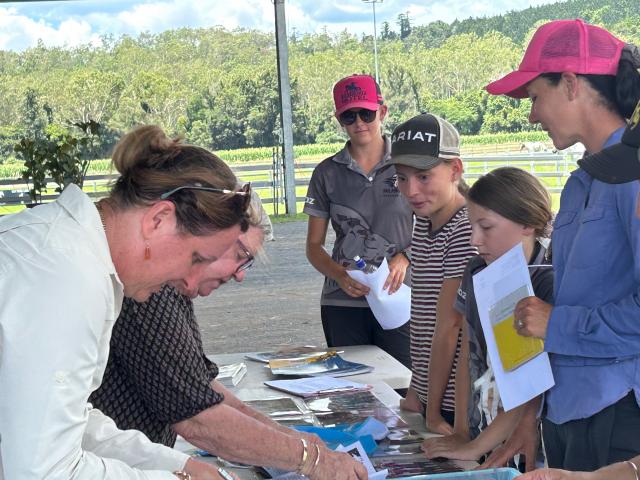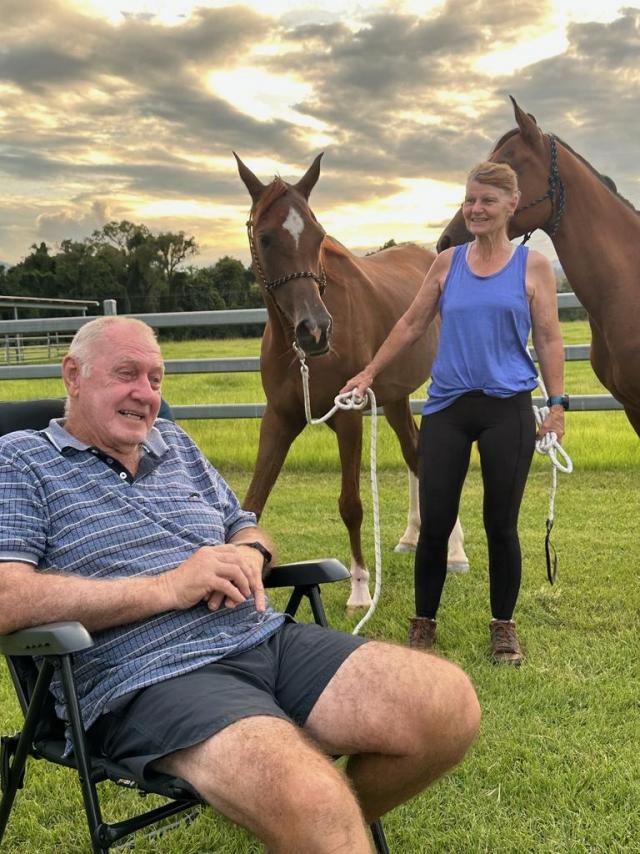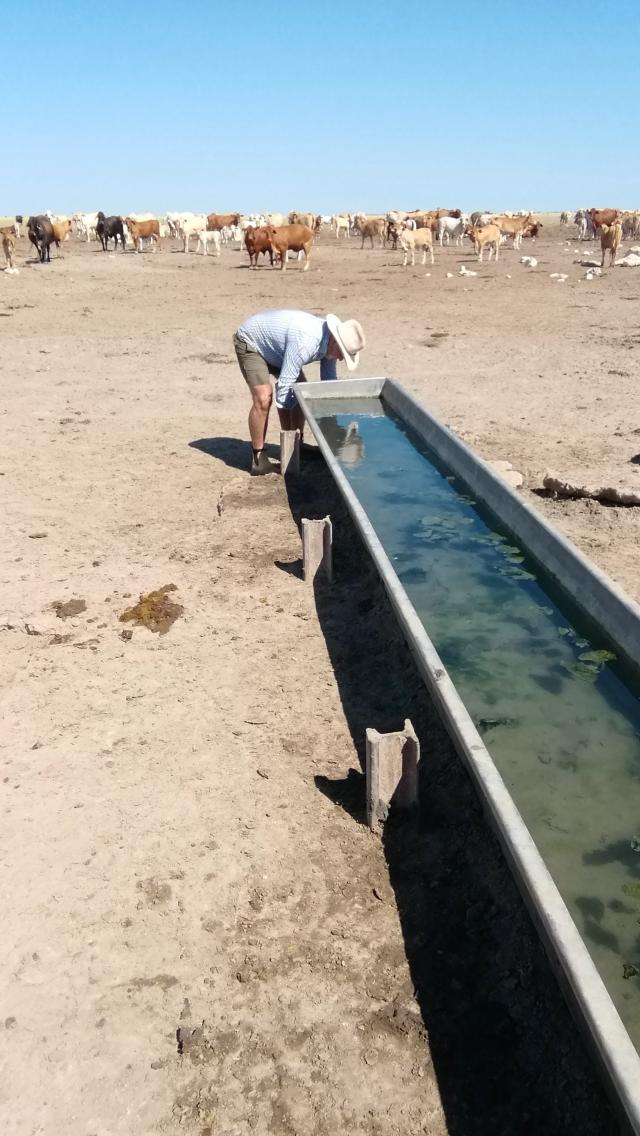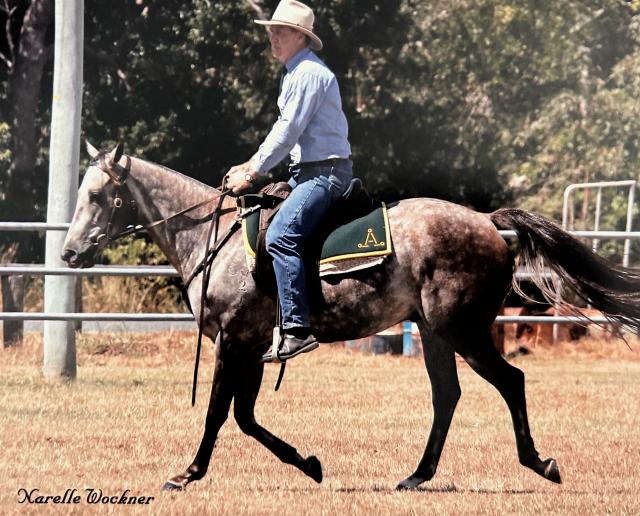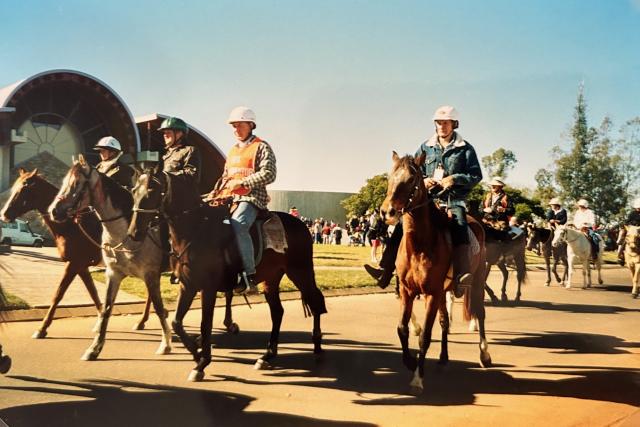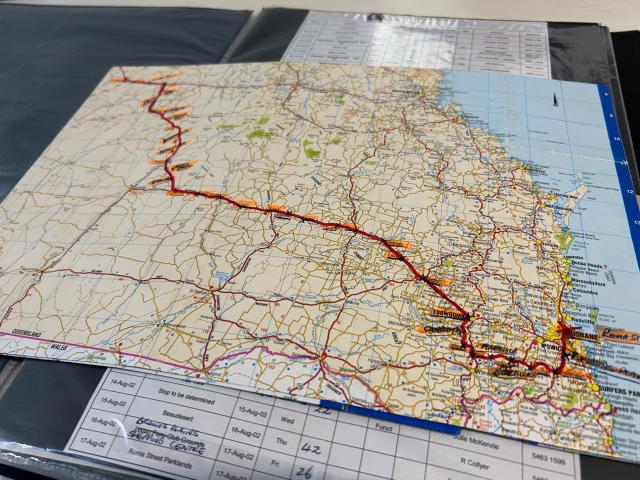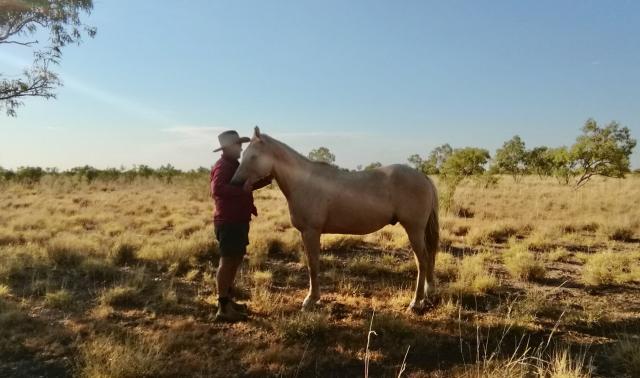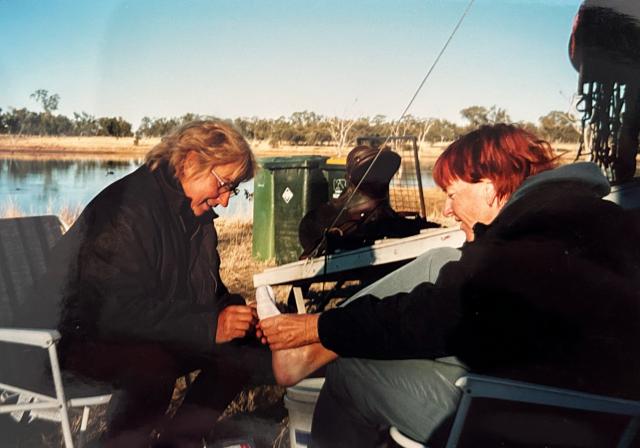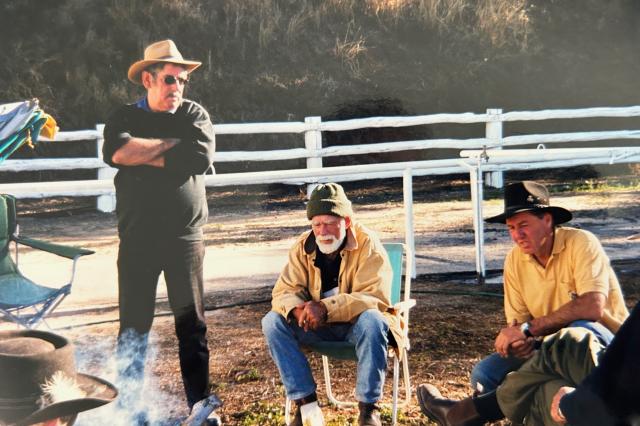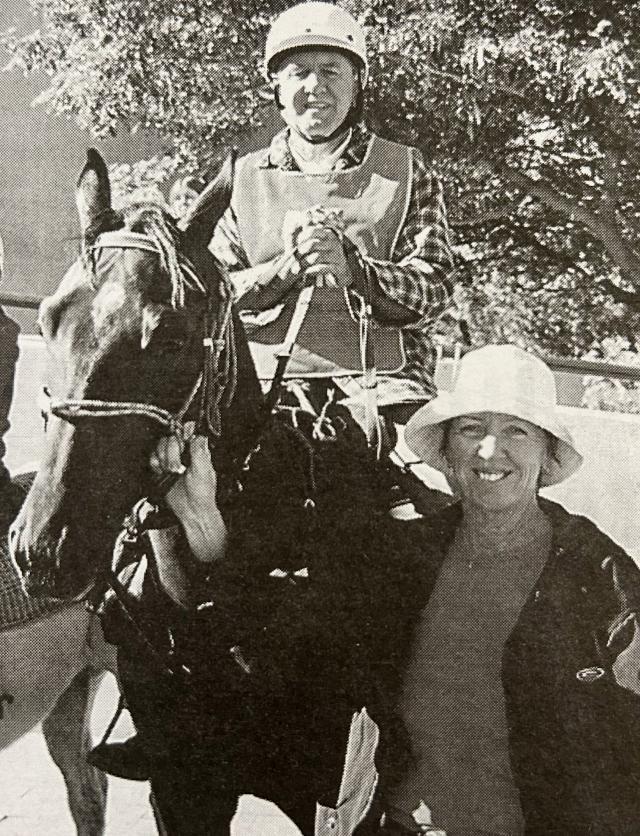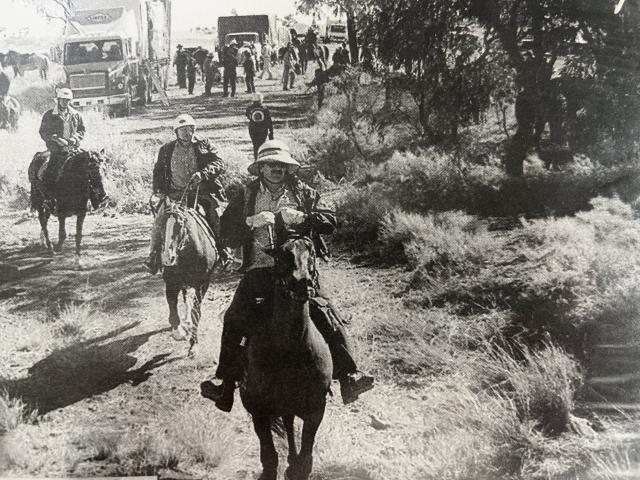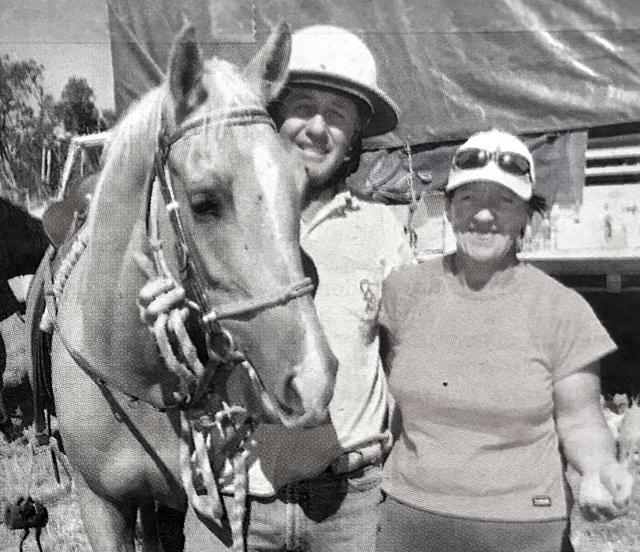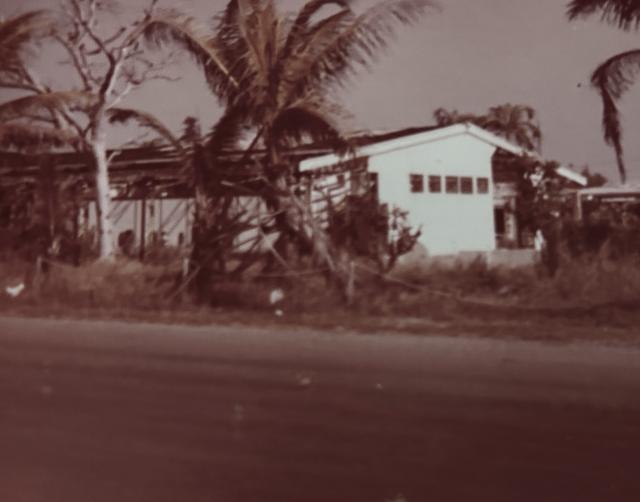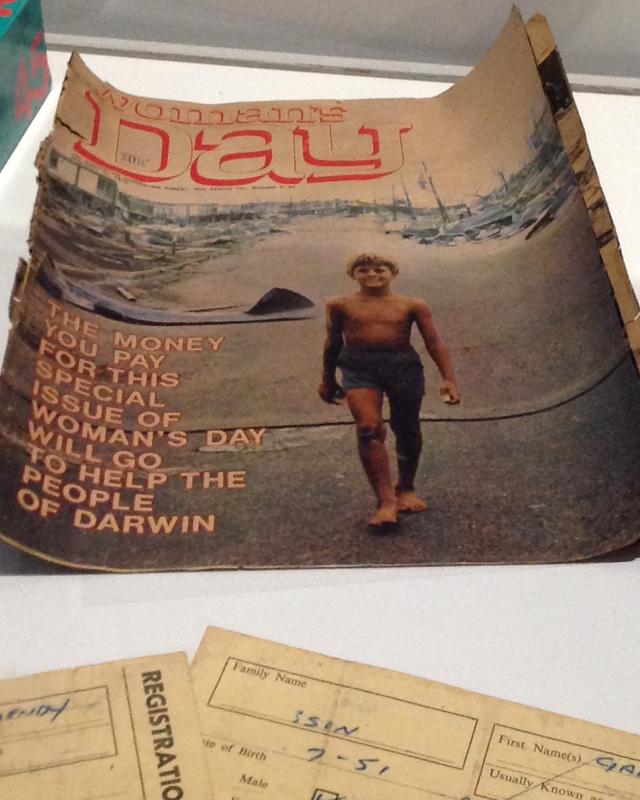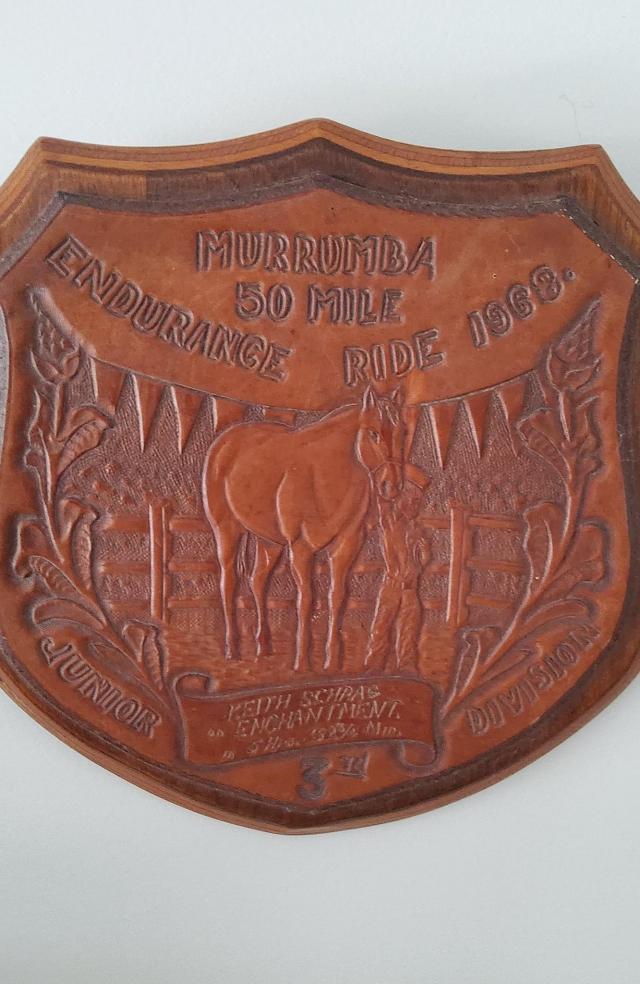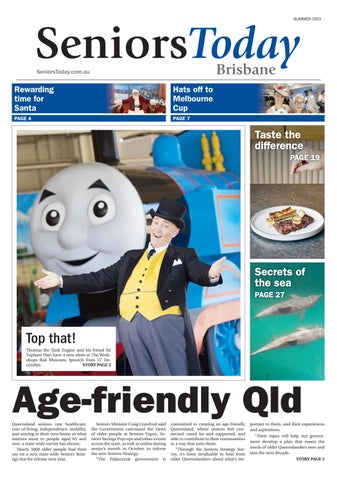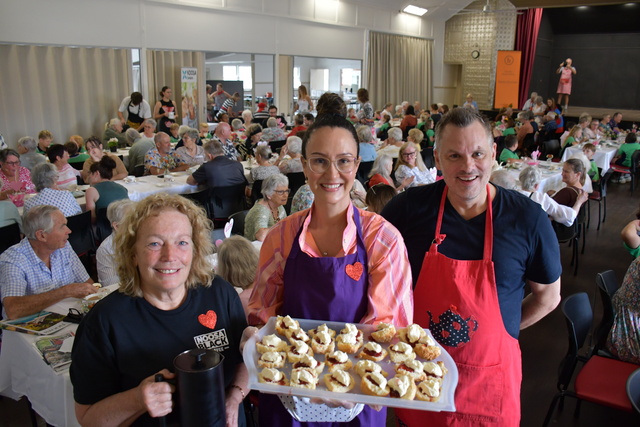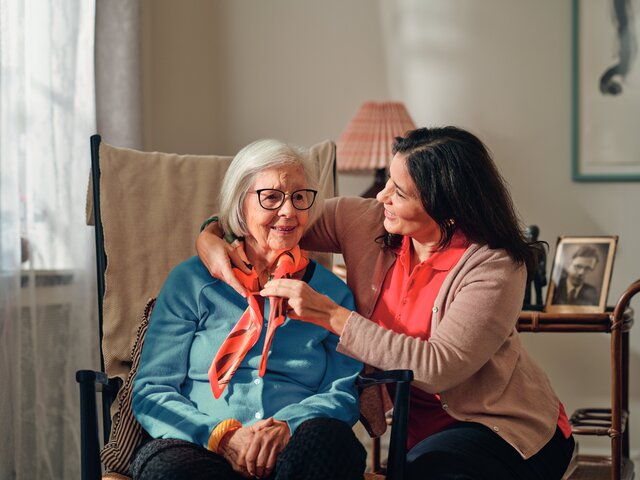PRECEDE
Keith Schrag has spent his life around horses, while his wife Julie has been happy on foot. ERLE LEVEY talks with a couple who have covered a lot of territory.
BREAKOUT QUOTE
“I decided to go droving. I went for six weeks and was gone for for 10 years.’’
I first met Keith and Julie Schrag at Stirling’s Crossing Equestrian Complex at Imbil in January. That was at the popular education weekend for new as well as the more experienced endurance riders.
As the sun started to dip behind the ranges, it was time to share a cheese platter and cold drink with others from the Stirling’s Crossing Endurance Club.
That’s when Keith and Julie started to tell the intriguing story of their lives. And it wasn’t long before others dropped by to join in with laughter, curiosity and at times sheer disbelief.
Both have spent a lifetime around horses but now they have reached the time to sit back and take life a bit easier.
While Keith has spent most of his life with horseshoes, Julie has been more occupied with running shoes.
“We don’t have to own a horse anymore but we can maintain an interest in them,” they tell me.
Nowadays, they are volunteering for some of the endurance horse-rides that are being held throughout Queensland this year.
But it all goes back to when Keith was away with cattle, so Julie took up running … long distance running and walking.
For example, a couple of six-day walks at Colac in Victoria, in honour of the late Cliff Young.
Then there was a 1450km walk from Longreach to Brisbane in support of keeping the stock routes open in Queensland.
Julie was the only one to complete that walk on foot. There were 13 horse-riders including Keith.
Among them was Dr Cathy Ryan from Mackay who helped bathe the blisters that Julie started suffering from.
Another of Julie’s purposeful adventures was walking and cycling through Vietnam, Thailand and Cambodia as part of a fund-raising campaign for MS – those suffering from multiple sclerosis.
“Cambodia was a scary place back then,’’ Julie said. “It was not that long after the Pol Pot regime had been toppled and the people were still suffering.
“We went as a group as a fundraiser for MS Australia, then I went back raising funds for Oxfam.’’
Keith and Julie were at the Stirling’s Crossing weekend as they want to be part of the 2023 Tom Quilty Gold Cup at Imbil in late June as volunteers.
They will probably also head to Western Queensland at the end of July for the historically significant Winton-to-Longreach ride.
That 250km journey will be to commemorate 100 years of the Country Women’s Association in Queensland but also revive memories of the rides to Longreach in the 1980s to build support for the Stockmans Hall of Fame.
It’s not Keith’s first brush with endurance. In the 1960s he rode in a number of events at Murrumba Downs.
That was before they were married.
He lived on Bribie Island. The bridge was open by then, and he would ride to the back of Caboolture just to take part in an event.
He would compete then ride back to Bribie Island – probably a distance of at least 40km each way.
He still has a trophy as third-placed junior in the 50-mile ride in 1968.
Keith’s father had racehorses and trotters.
That included training the horses on the beach.
When his father set up spelling yards, Keith and Julie left and went travelling.
“We did a few different things,’’ Keith said. “We were living at Proserpine and our daughter was about to enter Year 12, so her friend had a horse and she wanted one too.
“We started the whole thing again,’’ Julie said, “and because Keith was horse savvy – good with the horses – we bought her an old horse from a riding school and we sort of got back into the swing of things.
“That became 25 years of horse breeding and riding through having our own stud. In the show ring, camp drafting.
“There were all sorts of horses but mainly Australian stock horses. Eventually Keith went back to camp drafting. He loves it.’’
They were living back in Caboolture by then.
“Cow chasing I call it,’’ Keith laughs.
“You have 12 in the pen and cut one out, then take it around the pegs and through a gate.
“We were breeding horses ourselves. We had our own stallion and stood him at stud at Caboolture.
“When the GFC hit … 2007 … everything fell apart overnight. The farm, our building company … we just about lost everything.
“We still had our horses but had to slow down.’’
Yet instead of slowing down, Keith went droving.
“Droving!’’ everyone in our circle exclaimed.
“What started as six weeks, turned into 10 years,’’ Keith said.
That drew even more incredulous laughter.
“You went droving for 10 years?’’
It was something he had always wanted to experience.
When the business fell apart, he told Julie it was a chance to do what they had always wanted to.
“I decided to go droving. I went for six weeks and was gone for for 10 years.’’
He started out droving cattle on the side of the road throughout Queensland and into the Northern Territory – all on horseback.
They would cross the border into Lake Nash- south of Camooweal and west of Mt Isa.
“We would pick cattle up at Augathella and take them right up through Boulia, Urandangie.’’
Another time they were droving cattle from Cloncurry down to Roma as a political fundraiser.
“Along the way the stations would donate 10, 20 head of cattle and they were auctioned when we got to Roma.’’
Keith was cooking on that drive and was at a loss as to what to prepare when the various politicians and other dignitaries would join in.
“He only knew corned beef and potatoes,’’ Julie laughed, but it seems the pollies were happy to just be a part of it.
Droving back then was all on horseback, she reflected.
No motorbikes and those things. So he would go away for six months at a time.
One year there was so much rain they didn’t need to take the cattle on the road to get feed. So he crossed into the Territory, doing some contract mustering at Alroy Downs in the Barkly Tablelands area.
That’s where he was offered a job on the station.
“Better than sleeping under a tree in a swag,’’ Keith said.
“In 2019 I retired. I had been at Alroy for eight years.
“So 2009-10 I was droving, doing some bull-catching and mustering, going out on the bore run to check on the water and the cattle.’’
Keith’s time at Alroy Downs saw another twist in his life with horses.
“The bloke I worked for in the NT, Stirling Buntine, owned properties in the Kimberley that Tom Quilty had owned.
“The Buntine Highway was named after Stirling’s father Noel, who started up so many of the road trains that criss-crossed the Top End of Australia.’’
Julie was in Caboolture at the time and Keith would come home every six months.
There were stories of the cockatoos eating the phone lines on the property at Alroy Downs.
The result was they had no phones for six months and had to cope with a couple of serious accidents the best they could.
“There were times I had to walk 20-30km home after a breakdown or getting bogged,’’ Keith said.
“Communication was so difficult.’’
The thing with horses is Keith hadn’t given them a second thought of late, Julie said, but a friend of hers is on the Imbil Community Facebook page and mentioned they were looking for volunteers for the Tom Quilty.
“It’s at Imbil,’’ I said. “How interesting is that?
“You don’t have to own a horse and pay for the feed anymore. We can come and just watch.
“That’s how we ended up with the whole idea of coming up here.
“Our next shot at volunteering will be at the end of April at Stirling’s Crossing to prepare us for the Tom Quilty in June, and hopefully then the Winton to Longreach ride.’’
While Keith was in the Northern territory Julie sold most of the horses at Caboolture, but a couple were annoying her and she couldn’t find another paddock.
So she rang the transport company and said: “Take them to Barkly Homestead.’’
So $1200 later, she rang Keith to say they would be there in three days. Pick them up.
“It was difficult to find anywhere down at Caboolture,’’ she said.
“We had four and had to put them on agistment. We had sold the truck. The float lived in the carport.
“I’m having to arrange to move horses all the time and I thought: ’Hang on, I’m not the horse person here.’
“So the final horse … we had bred from our daughter’s first show horse. We kept it and kept it.
“But eventually I sent him on a one-way ticket to the Northern Territory … Barkly Tablelands.’’
“They had been a lot of worry and expense in those later years.
“They’d been a lot of fun. They kept our daughter occupied during her teenage years … that was the main objective at the time.
“Julie would do the horse show run and it was the same people you were mixing with, from town to town.’’
Now they have the chance of giving back to a life with horses and getting something out of it. Something to do in their retirement.
While Keith enjoys being around the horses, Julie said they like camping as well.
“We have done so much travelling over the years … we just take off when we want.’’
Keith’s time droving out west was a great decision for him.
“Throughout my life I’ve done everything to make a living. This was something I wanted to do to suit myself.
“Here was my chance to try it … and I loved it.’’
While Keith was away with cattle, Julie had been able to pursue her interest in long-distance running and walking.
That included two trips to South East Asia as fund-raisers for the MS Society of Australia and Oxfam – a global movement working to end poverty.
“We had to communicate when he was in the Territory so there wasn’t much difference in being half-way across the world,’’ she admits.
Born in Brisbane, Julie moved to Bribie Island in the early ’70s and finished school there.
Her role after school was as an architectural draftswoman with Phil Balmer and Associates.
Keith did his building apprenticeship with his father Stan Balmer. That’s how they met.
There were not many women in drafting around at that stage, and Julie soon moved into interior design.
They married and lived on Bribie Island, where their daughter Heidi was born.
Yet a year later they were off to Darwin for the rebuild of the city after Cyclone Tracy hit on Christmas Eve in ’74.
“It took two weeks to get there because of the roads,’’ Keith said. “It was a mess, even two years later.
“Friends were up there and my brother Ted had been there. They were coming back telling us stories about the amount of work needed.
“We had mum and dad’s caravan … and it came back like a heap of junk.
“The gas stove exploded while we were up there.
“The roads were that rough it beat the eggs in the shell. You didn’t have to break them to get scrambled eggs.’’
That’s when they went travelling throughout Queensland then down to South Australia, Victoria and eventually Sydney.
“In our travels we thought that Proserpine was the ultimate place to live,’’ Keith said.
“There was the new development of Laguna Quays but we couldn’t get a job for love or money.
“They brought workers in from around Australia.’’
So they went to Cape York. They had been travelling in a converted Brisbane City Council bus with a soft-top Suzuki towed behind.
They left the bus in a caravan park at Mareeba and took the Suzuki to the Cape along the old telegraph track.
In a reminder of never judging a book by its cover, there was a time when the bus needed some work done.
While Keith fiddled, an older caravan park resident offered to help.
Keith didn’t think he could have much to offer but it turned out the man had been head mechanic at the Brisbane bus depot.
During their journey through the heart of Australia, Keith worked at Uluru on the resort’s staff quarters.
They had planned to go to Perth for the America’s Cup but Julie already had a job at a design office in Alice Springs.
“We came up from Sydney for Expo 88,’’ Julie said. “Keith was in construction as a sub contractor.
“There was such excitement at the time – we went home, sold the place and went to Proserpine.
“We had bought a small orchard at the base of Mt Julian, and the intention was to find work.
Yet they finished up living off their resources until Julie got a job at South Molle Resort and Keith washed dishes to make ends meet.
Keith’s first horse was an Anglo-Arab from the Darling Downs – from Elizabeth Bligh at Bostock’s Arabian Stud at Brookstead.
Elizabeth, together with her mother Elwyn Bligh, established their stud in 1947.
Mary Bonham had instigated his love of endurance riding.
And horses have been his life since riding to school at Cecil Plains, on the Downs.
On the other hand Julie started walking in the mid ’90s. That was when they returned to Caboolture and initially it was to meet people.
They had a team of horses for show hacking and dressage.
“We lived in the horse truck for 12 months in between shows and before buying the house,’’ Julie said.
“I joined the Caboolture Walking Club, with Ron Grant as the instigator of the WWW – Why Worry Walkers.
“His involvement was with Queensland ultra-runners and long-distance walking groups.
“They talked me into a 12-hour walk at the historical village. That went to a 24-hour walk including a Bunya Mountains walk.
“I’ve met some amazing people over the years through walking, including Cliff Young.
“We did the six-day walk in his home town of Colac, twice. The first was in 2002 – the Year of the Outback.
“The second time they held a memorial for him.’’
Cliff Young made a name for himself by winning the Sydney-to-Melbourne ultra-marathon in 1983 – a distance of 875km in a time of five days, 15 hours and four minutes.
Even more remarkable, the 61-year-old Victorian dairy farmer completed the run wearing overalls and gumboots.
“He was an amazing man for his age,’’ Julie said, “… what he’s done.
“By day 2, 3 and 4 at Colac you are mentally exhausted as well as physically.’’
The walk and ride from Longreach to Brisbane in 2002 saw Julie walking each day while 12 men and one woman rode horses.
Julie’s toes were individually bandaged to prevent blisters and she lost all her toe nails on the journey.
There were half a dozen trucks and caravans to carry supplies, and at night the riders would sleep in the trucks or a tent.
“You could write a book on that ride,’’ Keith said. “The things that took place.
“It would include kangaroos jumping through the sheep fencing and the electric fence that kept the horses safe at night.
“They spread the horses everywhere. It took a plane from the property owner to find them the next day … mine were about 10km away.’’
More often than not Julie would lead them into camp each night. Her main problem was the snoring that came from other tents.
It took 49 days to cover the 1450km then the horses were trucked into Brisbane from Beenleigh due to safety concerns in traffic. That left Julie to walk the last leg.
Keith and Julie’s remarkable adventures highlight how their lives have been well lived. But it’s the purpose behind many of their expeditions and undertakings that draws you in to listen to their understated yet extraordinary journey.
Their recent endeavour to volunteer at endurance riding events provides inspiration for many.
Horse lovers, those passionate about Australia’s horse heritage, or even people just interested in supporting these fantastic events set in the heart of the Australian bush – it’s great to lend a helping hand.
And their story reminds me, you can take the boy away from horses but you cannot take the horses away from the boy.




